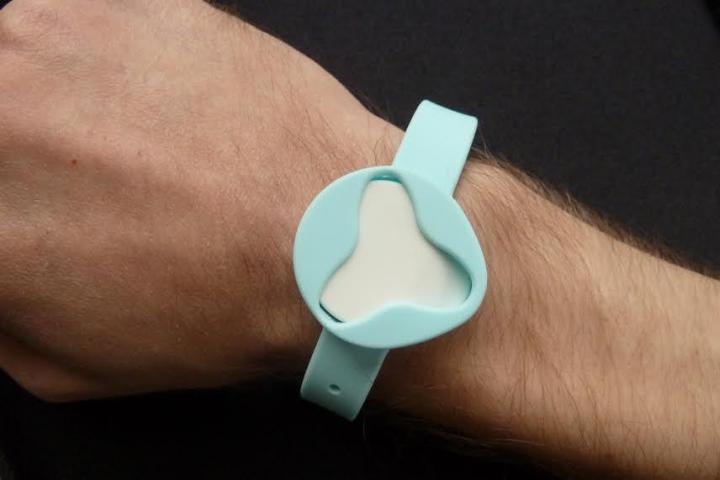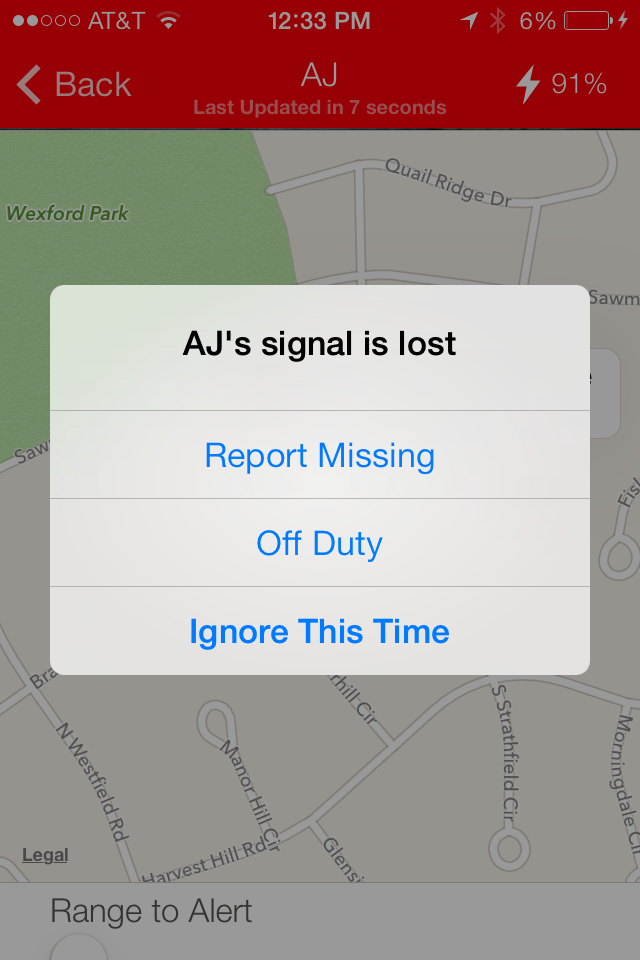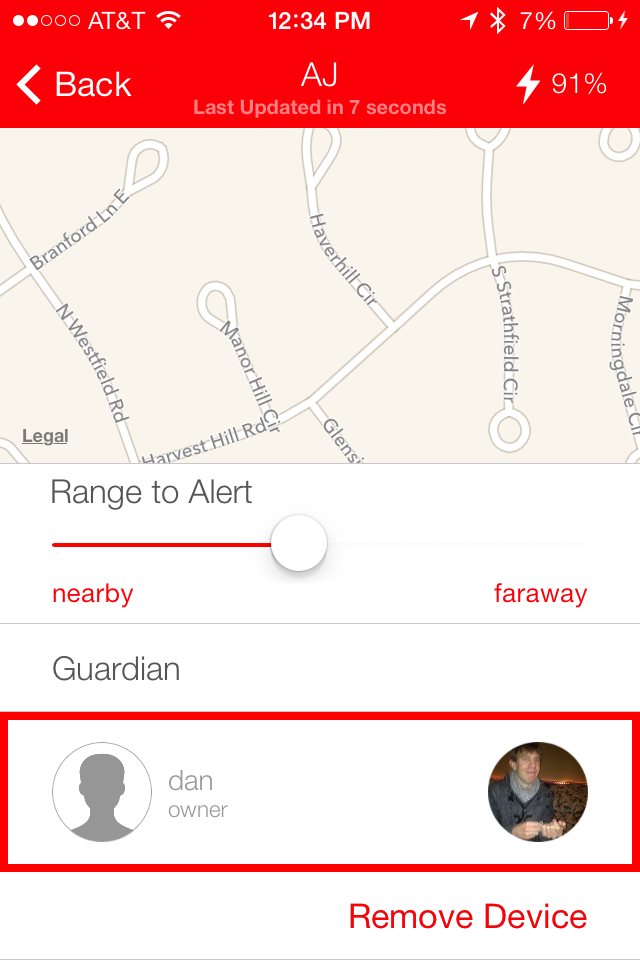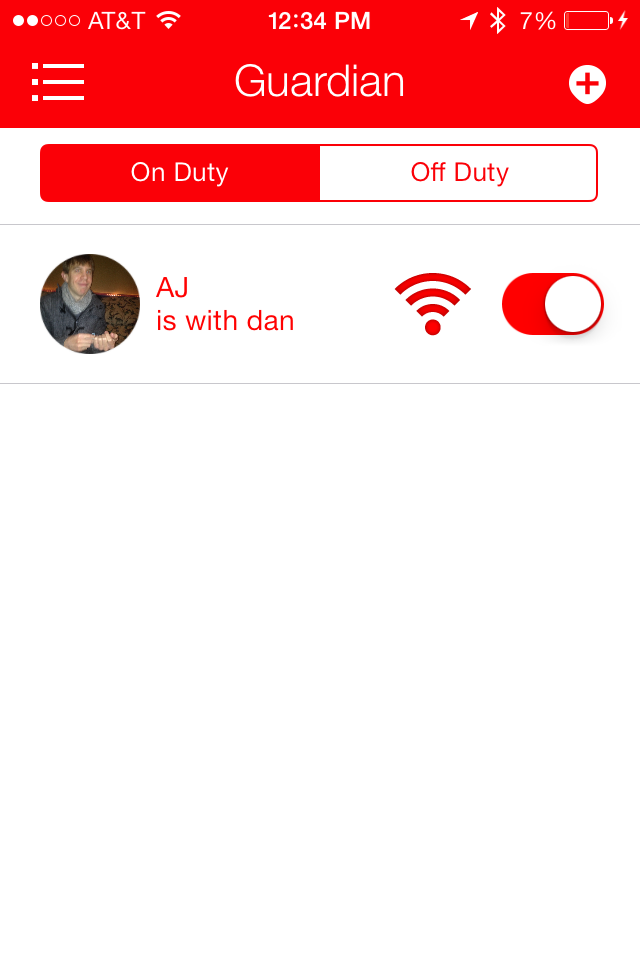
Do you know where your kid is? Do you have a way to locate a child if he or she vanishes? With the Guardian, you can keep track of your kid (or whatever you strap it to) at all times with your smartphone. The Guardian from BeLuvv provides parents with an extra set of eyes on their kids at all times, making life easier for adults and safer for children. But good intentions can only take you so far. if you’re going to put any faith into a device like Guardian, you want to know that it works. The demo version of the device that we played with left us a little lost.
We got ahold of BeLuvv’s Guardian, which looks like a small, water repellant polycarbonate puck that communicates with an iPhone via Bluetooth 4.0 (low energy) to deliver location information for monitoring. You attach it to your kid’s wrist like a watch (a very strange looking watch). To do this, the Bluetooth puck is housed within a flexible plastic buckle that sits in the middle of an adjustable bracelet. It’s lightweight enough that it won’t be annoying to a child but seems to be sturdy enough to hold up through some roughhousing.
Save your kid the embarrassment of being treated like a dog, and hide your overprotectiveness with Guardian.
The Guardian never came loose from the buckle without intentionally being removed. A metal button snaps in place to keep the bracelet locked in. This probably could be compromised by a particularly curious kid who really didn’t want to wear the Guardian, but it didn’t feel too bothersome or excessively tight at any point.
This design is all very simple but effective enough. The bracelet came in a light baby blue color, which is the default option being offered from BeLuvv at the moment. The company launched an Indiegogo campaign to fund other colors, and having the option for multiple bands with different looks seems like an easy way to make kids more interested in the Guardian.
So, it will fit on your kid’s wrist fine, and probably yours too, but getting our demo unit to communicate correctly was tough.
The primary function of Guardian is to give parents a virtual radius so they always know where their kids are. To do this, the Guardian communicates with the iPhone via Bluetooth Low Energy. You will see the location of the child on a map in the Guardian app, letting you know exactly where he or she is … kind of. The GPS location was a little off-kilter when we tried it out. Rather than showing up at the residence we were working from, Guardian placed us in a park a couple blocks down the street. One could interpret this as Guardian suggesting we go to the park, but odds are it’s just not tuned right. In a very populated area, this could be problematic. If you’re trusting your child to someone else for the day and you decide to check in on the GPS and you see the location as somewhere other than where you’ve agreed upon, it could cause a scare.
Unlike the GPS, though, the Bluetooth seemed to work as advertised. When fired up the Guardian app, it quickly identified the active Guardian device in the room and prompted us to create a profile for the wearer and the watcher. About 20 feet of distance was all it took for the app to alert us of a wandering child (you can adjust the sensitivity for when an alert appears, ranging from leaving your immediate side to 230 feet of freedom), and it picked up on the distance between walls and doors. Whenever the signal is lost, the person on child-watching duty is prompted to report the child missing. (Alternatively, users can also choose to ignore the notification or check in as “Off Duty,” which is the digital equivalent of scoffing and saying “Not my problem!”) Even though the GPS location seems to miss the mark, the nearby communications work well enough that Guardian could at the very least mean parents can cut the cord on those terrible leashes that you sometimes see attached to kids. If nothing else, please save your child the embarrassment of being treated like a dog, and hide your overprotectiveness with Guardian.
We had a few problems with the location, but reading the app was tough, too. BeLuvv is based in Taiwan, and while the text in the app is in English, it’s occasionally broken. This is excusable in some cases, but while reading the walkthrough of how the app worked, there were several blocks of texts that we had to re-read to decipher the intended message. It was nothing a little editing in the next update can’t take care of, but it will be an important step in teaching parents how exactly to use Guardian. Otherwise the Guardian is going to wind up thrown out a window in frustration rather than on the kid’s wrist.

The more ambitious goal of BeLuvv with Guardian is to create a network of safe havens for children who may find themselves outside the eye of parental supervision. The way they intend to accomplish this is sending out notifications to other Guardian users when a child is reported missing. Ideally, someone else who is concerned with child safety will be nearby, catch the message, and help in the search for the missing child. It’ll take a lot of building to make this crowdsourcing solution to child care work, and a fix to the GPS accuracy to make it worthwhile, but it doesn’t hurt to aim high.
At this stage of its development, it’s hard to suggest BeLuvv’s Guardian for anything outside of a close-range solution for keeping an eye on your kid. The bigger ideas that surround the service seem underdeveloped thus far, and the more comprehenisve features are poorly described and explained in the app. If you’re going out into a busy place like the mall or a wide open environment with a lot of room to run like a park, sliding Guardian around your kid’s wrist can give you a little extra comfort in knowing where your kid is. If nothing else, it’ll save you from having to lasso your child all the time, and that’s a good thing. At $25, it doesn’t cost that much more than a leash and it’s far less demeaning.





